 Your new post is loading...
 Your new post is loading...

|
Scooped by
DocBiodiv
|
Une première étude est parue en août dans la revue scientifique Nature. Elle cherchait à évaluer l’étendue de ces zones déglacées qui pourraient apparaître d’ici à 2100. Et ça en fait des km²… Sans compter les calottes continentales que sont le Groenland et l’Antarctique, il y a 210.000 glaciers dans le monde qui totalisent environ 650.000 km². Selon les estimations de Jean-Baptiste Bosson et des sept autres auteurs de l’étude, cette surface pourrait diminuer de 22 % à 51 % d’ici à la fin du siècle, en fonction de l’évolution de nos émissions de gaz à effet de serre. Soit une perte de l’équivalent de la taille du Népal (149.000 km²) dans le meilleur des cas, ou, dans le pire, de la Finlande (339.000 km²).

|
Scooped by
DocBiodiv
|
Twenty-five years since foundational publications on valuing ecosystem services for human well-being1,2, addressing the global biodiversity crisis3 still implies confronting barriers to incorporating nature’s diverse values into decision-making. These barriers include powerful interests supported by current norms and legal rules such as property rights, which determine whose values and which values of nature are acted on. A better understanding of how and why nature is (under)valued is more urgent than ever4. Notwithstanding agreements to incorporate nature’s values into actions, including the Kunming-Montreal Global Biodiversity Framework (GBF)5 and the UN Sustainable Development Goals6, predominant environmental and development policies still prioritize a subset of values, particularly those linked to markets, and ignore other ways people relate to and benefit from nature7. Arguably, a ‘values crisis’ underpins the intertwined crises of biodiversity loss and climate change8, pandemic emergence9 and socio-environmental injustices10.

|
Scooped by
DocBiodiv
|
La protection des zones humides joue un rôle clé dans l’adaptation des oiseaux au changement climatique. Pourtant, nombre d’entre elles ne sont toujours pas protégées.

|
Scooped by
DocBiodiv
|
At the UN Biodiversity Conference (CoP15), currently taking place in Montreal, Canada, delegates from 196 countries are negotiating a new post-2020 Global Biodiversity Framework to attempt to halt the rapid destruction of species worldwide. The vision is to ensure that biodiversity is valued, protected and restored by 2050. A key part of the Framework will be a set of agreed

|
Scooped by
DocBiodiv
|
A core aim of the 15th meeting of the Conference of the Parties (COP-15) to the UN Convention on Biological Diversity in October 2021 is to set out the post-2020 global biodiversity framework to halt biodiversity loss and its impacts on ecosystems, species, and human systems. With an estimated one million species threatened with extinction, the stakes are high, and the scale of the challenge is vast. This Voices asks: what
would you most like to see COP-15 achieve and why?

|
Scooped by
DocBiodiv
|
Global biodiversity policy is at a crossroads. Recent global assessments of living nature (1, 2) and climate (3) show worsening trends and a rapidly narrowing window for action. The Convention on Biological Diversity (CBD) has recently announced that none of the 20 Aichi targets for biodiversity it set in 2010 has been reached and only six have been partially achieved (4). Against this backdrop, nations are now negotiating the next generation of the CBD's global goals [see supplementary materials (SM)], due for adoption in 2021, which will frame actions of governments and other actors for decades to come. In response to the goals proposed in the draft post-2020 Global Biodiversity Framework (GBF) made public by the CBD (5), we urge negotiators to consider three points that are critical if the agreed goals are to stabilize or reverse nature's decline.

|
Scooped by
DocBiodiv
|
It is a well-known problem: too rarely do nature conservation initiatives, recommendations, or strategies announced by politicians lead to people really changing their everyday behavior. A German-Israeli research team led by the Helmholtz Center for Environmental Research (UFZ) and the German Center for Integrative Biodiversity Research (iDiv) has investigated the reasons for this. According to the team, the measures proposed by politicians do not sufficiently exploit the range of possible behavioral interventions and too rarely specify the actual target groups, they write in the journal Conservation Biology.

|
Scooped by
DocBiodiv
|
La COP23, qui s’ouvre à Bonn ce lundi 6 novembre jusqu’au 17 novembre, intervient après une nouvelle année de phénomènes météorologiques extrêmes, dont les impacts ont encore battu des records historiques – à l’image des inondations en Asie centrale et du Sud ou de la récente série d’ouragans en Amérique du Nord et dans les Caraïbes. L’IDDRI (Institut du développement durable et des relations internationales) présente dans son dernier édito les enjeux de l’événement : avancer sur une urgente et délicate mise en œuvre de l'accord de Paris.
|

|
Scooped by
DocBiodiv
|
Les gouvernements du monde entier se réunissent à Nairobi du 15 au 19 octobre pour recommander des mesures fondées sur la science pour soutenir la mise en œuvre de l'ambitieux Cadre mondial Kunming-Montréal pour la biodiversité , adopté en décembre dernier.

|
Scooped by
DocBiodiv
|
La biodiversité est un terme charismatique et phare de notre époque, de plus en plus largement employé dans la science, par les politiques et la société en général. Cependant, selon les personnes et contextes dans lequel il est employé, ce terme n’est pas toujours défini de la même manière et peut renvoyer à une multitude d’enjeux. Alors qu’une multitude de manuels et revues couvre les différents aspects de la biodiversité, tous accordent une large reconnaissance à la crise globale qui l’accompagne.

|
Scooped by
DocBiodiv
|
Here, we develop a mechanism using the International Union for Conservation of Nature’s Red List of Threatened Species to identify species that are likely to be threatened by international trade. Of 2,211 such species, CITES includes 59% (1,307 species), leaving two-fifths overlooked and in potential need of international trade regulation. Our results can inform deliberations on potential proposals to revise trade measures for species at CITES Conference of the Parties meetings.

|
Scooped by
DocBiodiv
|
With a new international agreement on the conservation and sustainable use of marine biodiversity of areas beyond national jurisdiction (BBNJ Agreement) on the horizon, now is the time to start laying the foundation for successful implementation. This paper provides some initial reflections for supporting rapid, effective, and equitable implementation of the BBNJ Agreement in three priority areas: (1) bringing the Agreement into force; (2) establishing the institutional framework, including financial mechanisms; and (3) developing capacity, science, and technology.

|
Scooped by
DocBiodiv
|
It is nearly three decades since the world recognized the need for a global multilateral treaty aiming to address accelerating biodiversity loss. However, biodiversity continues to decline at a concerning rate. Drawing on lessons from the implementation of the current strategic plan of the Convention on Biological Diversity and the 2010 Aichi Targets, we highlight three interlinked core areas, which require attention and improvement in the development of the post‐2020 Biodiversity Framework under the Convention on Biological Diversity. They are: (1) developing robust theories of change which define agreed, adaptive plans for achieving targets; (2) using models to evaluate assumptions and effectiveness of different plans and targets; and (3) identifying the common but differentiated responsibilities of different actors/states/countries within these plans.

|
Scooped by
DocBiodiv
|
Plusieurs études scientifiques soulignent quelles sont les priorités en matière de conservation de la nature pour la prochaine décennie. Protéger 30 % de la planète d’ici à 2030. Telle est l’ambition qui semble se dessiner en matière de conservation de la nature. Le projet de cadre mondial qui doit être négocié lors de la 15e édition de la Conférence des parties (COP) de la Convention des Nations unies sur la diversité biologique en 2021, dont la version actualisée a été publiée le 1er septembre, affiche cet objectif.

|
Scooped by
DocBiodiv
|
La Journée internationale de la biodiversité tombe deux semaines seulement après la publication de l’Évaluation mondiale sur la biodiversité et les services écosystémiques du Groupe…

|
Scooped by
DocBiodiv
|
Bonn (IPBES News) - Three of the world's most eminent experts on the intersection of nature and human well-being were announced today as co-chairs of a landmark new global assessment commissioned by the 125 governments comprising the Intergovernmental Science-Policy Platform on Biodiversity and Ecosystem Services (IPBES).
|
 Your new post is loading...
Your new post is loading...
 Your new post is loading...
Your new post is loading...







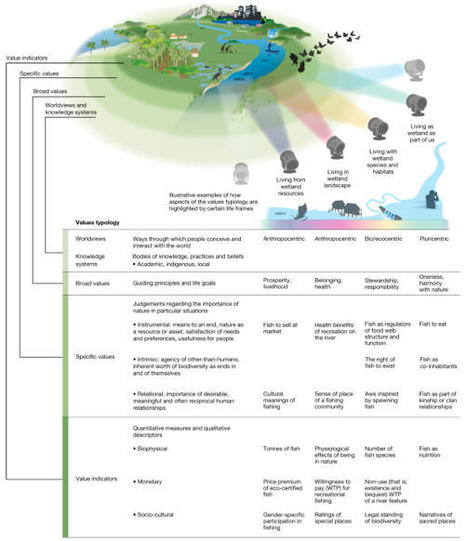
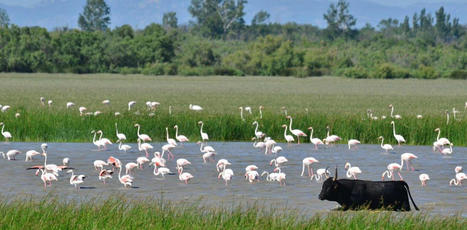



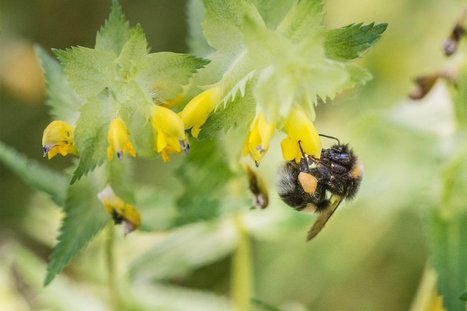


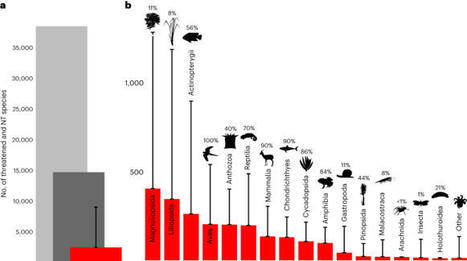
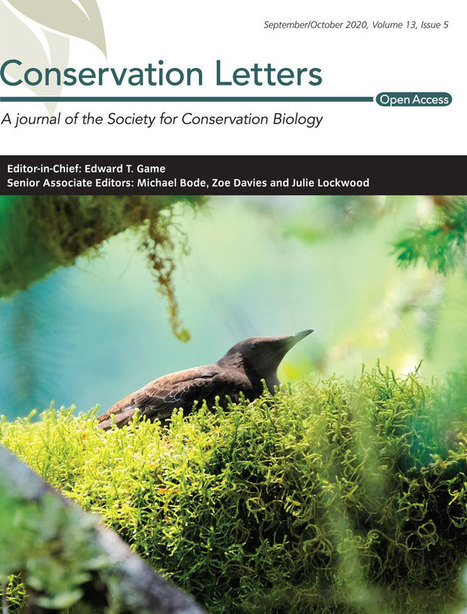

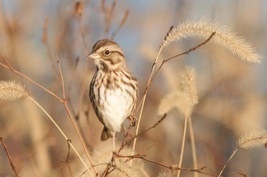





Lire aussi : https://www.francebleu.fr/infos/environnement/one-planet-polar-summit-2023-un-sommet-au-secours-des-poles-et-des-glaciers-2576369
Dossier de presse de l'Elysée qui rappelle la stratégie polaire de la France à horizon 2030 https://www.elysee.fr/admin/upload/default/0001/15/ba771b43e4ded92386d92022f0ec3adb3bb89906.pdf
Site web Sommet mondial sur les pôles et les glaciers